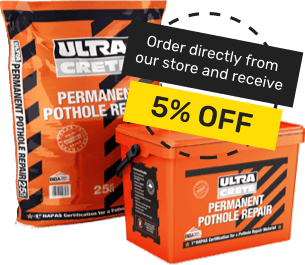How Line Markings Can Help to Diversify Travel Methods in Urban Areas
No matter where you live in the UK, it is likely to be the case that cars are the dominant form of transport on your roads. At the end of 2020 there were 32,697,408 cars licensed in the UK, an increase of 42.5% in 25 years, and there is no denying that our urban road systems are designed primarily with the private car in mind.
With so many people favouring cars as their main method of transport (according to the Campaign for Better Transport, people in the UK will travel by car between 50%-54% of the time to make trips for shopping, leisure and personal matters) it makes sense that roads cater to this demand.
As we move into the future, however, town planners, local councils and national governments are beginning to consider how they can make our urban areas more inclusive, and usable for those who prefer not to (or in some cases, are unable to) travel by car. In this, road and line markings can play an important role.
The rationale behind making roads more accessible
There have been increasing efforts to encourage people to utilise a greater variety of transport in our towns and cities, both here and abroad – including public transport, cycling and walking. The increasing popularity of e-bikes, in particular, has opened up new opportunities who found fitness levels a barrier to entry for long bike journeys.
With nearly 50% more cars on the road than in the 1990s, issues such as congestion and poor air quality have become more acute in urban areas, with commuters often finding themselves stuck in traffic. The result for cities such as London is that air pollution levels are frequently too high, and the noise of traffic worsens levels of stress for residents and passersby.
The twin crises of poor public health and man-made climate change is also acting as a strong motivator for those who want to change the way we travel. Options such as cycling and walking have the potential to greatly improve people’s personal health, while also (alongside public transport) representing greater carbon efficiency and cutting emissions.
While the private car is likely to be a favoured way of travelling for many decades to come, especially with the rise of electric and driverless vehicles, greater variety for individuals – and particularly when travelling short distances – is seen as a desirable outcome.
Why urban design matters
Urban design has, unfortunately, been a sticking point for promoting the use of other forms of travel. The National Travel Attitudes Survey (NTAS) found that 66% of adults over the age of 18 agreed that “it is too dangerous for me to cycle on the roads”. The figure was even higher for women, at 71%. An emphasis on cars in road design means that people using other vehicles can feel crowded out and unsafe, especially in areas with higher speed limits.
40% of those surveyed agreed (or strongly agreed) that many of the journeys under 2 miles that they currently make by car could ‘just as easily’ be made by bike. What’s more, in research exploring “micromobility” (focusing particularly on e-bikes), Carnegie Mellon University found that if 10 percent of short car trips during peak afternoon travel were replaced with micromobility options, there would be significant improvements in congestion and air quality.
Switching from four wheels to two doesn’t necessarily mean hopping on a bicycle, however. Research from the Motorcycle Industry Association also suggests that if just one in ten people switched from to a motorbike or scooter, that traffic congestion would almost half.

The role that road and line markings can play
Road and line markings are an important tool in ensuring that our roads are a safe and welcoming space for all travellers, and they can also help to promote inclusivity across many aspects of urban design.
Perhaps the most famous example of this is Amsterdam, an extremely bike-friendly city in a bike-friendly country. In Holland, between 8am and 9am on any working day there will be almost 2 million cyclists on the roads, with a full quarter of the population using a bicycle every day.
One of the things that makes this possible is a vast network of cycle lanes in Amsterdam and beyond – with 320 miles of paths within the city alone. These are marked with various kinds of white lines which serve to indicate different types of cycle lanes, whether they are on the road itself or separated into dedicated areas away from road and pavement.
While usually one-way, cycle paths which allow travel in both directions are demonstrated through a dashed line that runs through the middle of the lane, and it isn’t not uncommon for high-friction road surfacing to be used on various sections of these paths to reduce the risk of accidents.
Road markings can also improve the efficiency and usability of public transport, with bus lanes improving journey times and also giving (when indicated through signage) another space for cyclists and motorbike riders to use. Furthermore, road surfacing and markings can improve road safety and encourage good driving in those using cars – increasing the sense of security for more exposed road users.



This sense of safety is important to inclusivity, as it encourages a greater variety of people to choose cycling. When cycling reaches a 7% mode share in an area, at least 50% of those cyclists will be women, whereas in lower numbers cycling tends to be dominated by young men.
We tend to think of road markings as a way to ease the journeys of car drivers and signal safety information vital to the smooth running of our roads. But as road users diversify and travel options increase, it seems likely that road markings will be a key part of this transition, and play their part in more inclusive and sustainable urban design.
